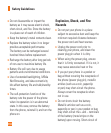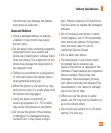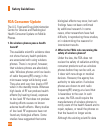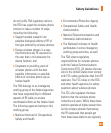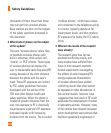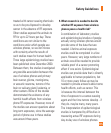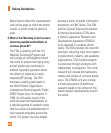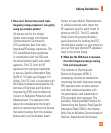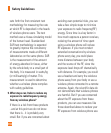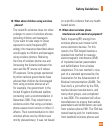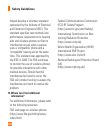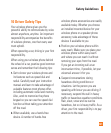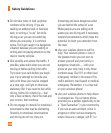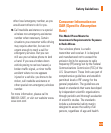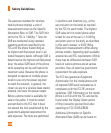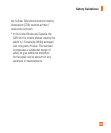
Safety Guidelines
118
sets forth the first consistent test
methodology for measuring the rate
at which RF is deposited in the heads
of wireless phone users. The test
method uses a tissue-simulating model
of the human head. Standardized
SAR test methodology is expected
to greatly improve the consistency
of measurements made at different
laboratories on the same phone. SAR
is the measurement of the amount
of energy absorbed in tissue, either
by the whole body or a small part of
the body. It is measured in watts/kg
(or milliwatts/g) of matter. This
measurement is used to determine
whether a wireless phone complies
with safety guidelines.
9. What steps can I take to reduce my
exposure to radiofrequency energy
from my wireless phone?
If there is a risk from these products
- and at this point we do not know
that there is - it is probably very
small. But if you are concerned about
avoiding even potential risks, you can
take a few simple steps to minimize
your exposure to radio frequency(RF)
energy. Since time is a key factor in
how much exposure a person receives,
reducing the amount of time spent
using a wireless phone will reduce
RF exposure. If you must conduct
extended conversations by wireless
phone every day, you could place
more distance between your body
and the source of the RF, since the
exposure level drops off dramatically
with distance. For example, you could
use a headset and carry the wireless
phone away from your body or use a
wireless phone connected to a remote
antenna. Again, the scientific data do
not demonstrate that wireless phones
are harmful. But if you are concerned
about the RF exposure from these
products, you can use measures like
those described above to reduce your
RF exposure from wireless phone use.



